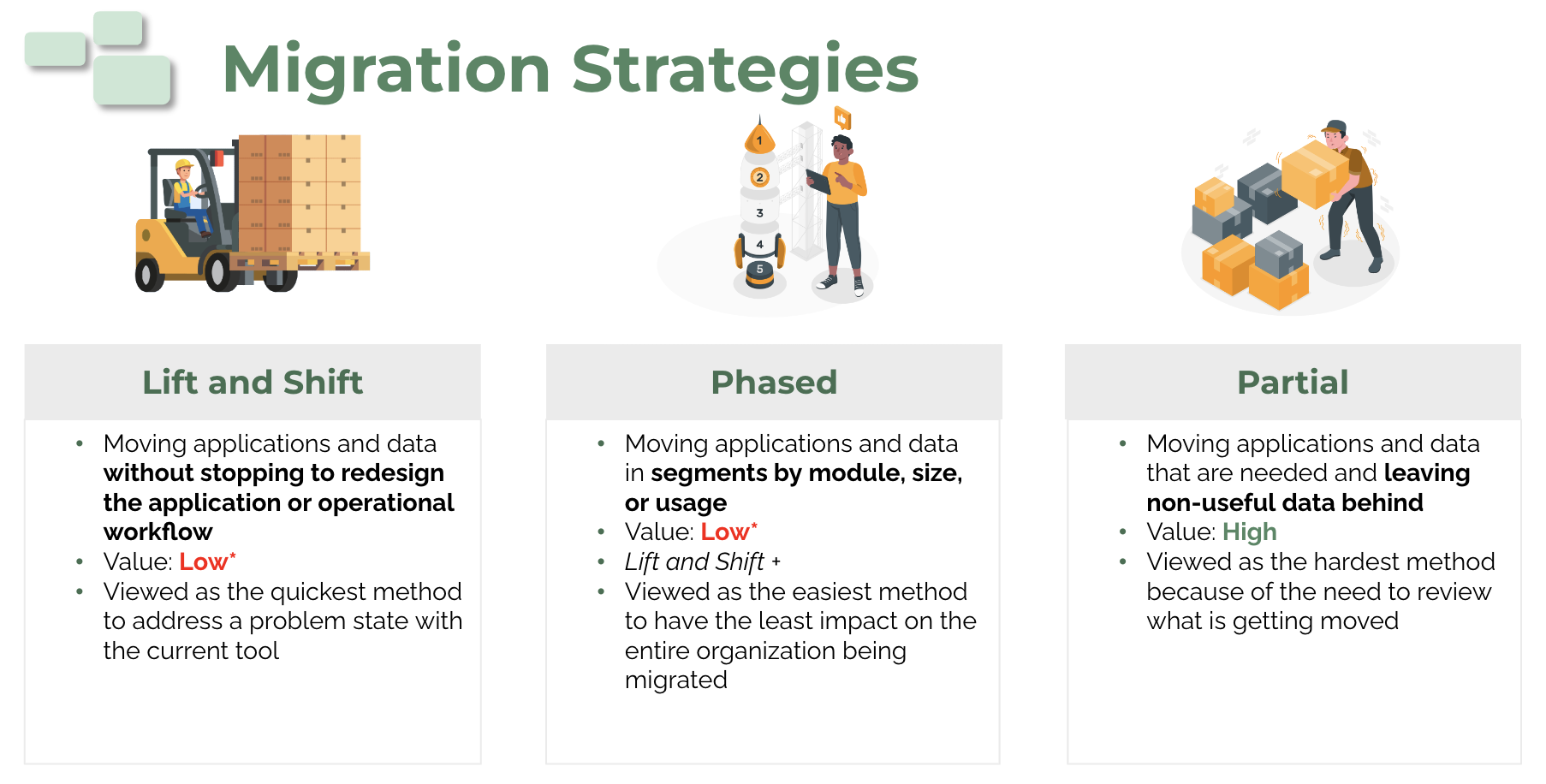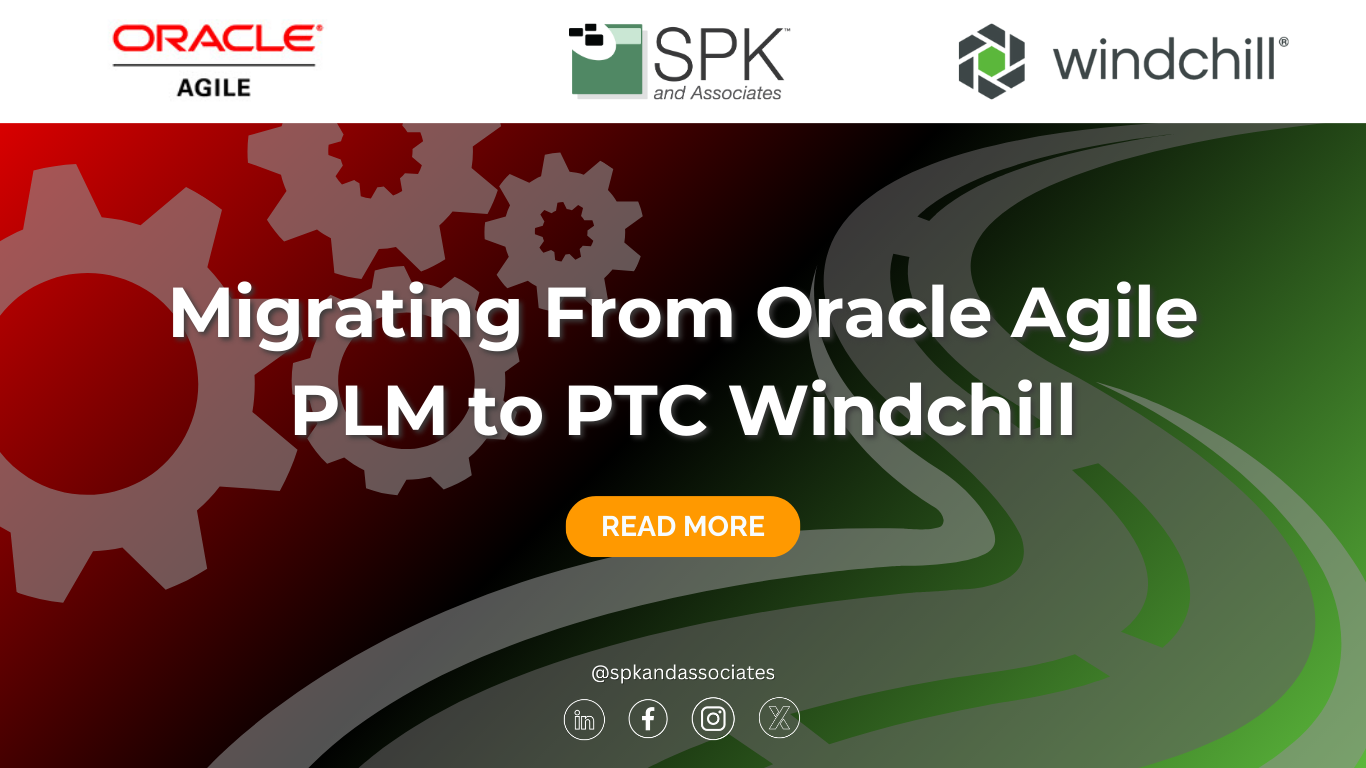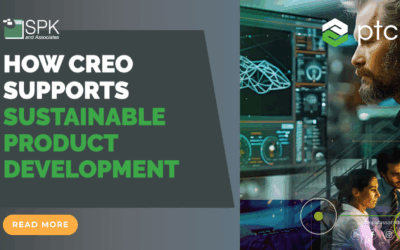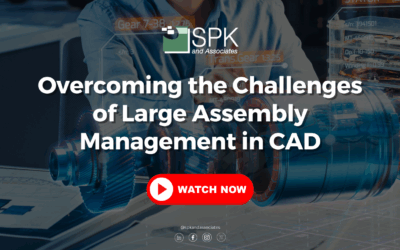Oracle Agile PLM is approaching its end of life, with Oracle confirming that the final version, 9.3.6, will receive Premier Support until December of 2027. After this period, support will shift to Sustaining Support, which only addresses critical security vulnerabilities and known bugs. No further updates or new features will be introduced after that time. As an Oracle Agile user, you may see the benefits of switching to a different solution such as PTC Windchill. Fortunately, this migration does not have to be difficult. Let’s explore how to migrate from Oracle Agile PLM to PTC Windchill PLM and how this can benefit your business.


Oracle Agile PLM vs PTC Windchill PLM
While we have already conducted a thorough comparison of the two, let’s briefly go over some differences between Windchill and Agile PLM. Agile PLM is a suite of software applications that aims to manage all aspects of the product lifecycle. It helps plan, track, and manage product development projects. PTC Windchill is an out-of-the-box PLM solution aimed at propelling a product to market. It manages product life cycles and data, fostering collaboration along the way. Both tools track data, quality, and regulations. The largest difference is Windchill is more product-centric while Agile PLM is more manufacturing-centric.
Benefits of Migrating to Windchill
Migrating from Oracle Agile to Windchill can benefit your business greatly. Windchill has better visualization, offering a native viewer that allows users to markup data. It also has better integration capabilities. Windchill’s digital thread foundation allows ERP integration and native CAD integration. Users may also develop custom integrations using the APIs Windchill offers.

In addition to visualization and integration capabilities, customers state Windchill is overall easier to use than Agile PLM. It offers intuitive navigation and migration tools while Agile PLM often has issues migrating to cloud. Additionally, Windchill has a closed-loop architecture, encouraging continuous improvement. Furthermore, Windchill offers tiered pricing which could save your organization money. Lastly, PTC frequently updates Windchill and offers a SaaS option, Windchill+. Updates and cloud offerings ensure that customers have access to the latest innovations in PLM.
Migrating from Agile PLM to Windchill PLM
If the benefits of migrating interest you, here are the basic steps to use when making this transition.
Assessment
The first step is to back up your existing system and assess the size and complexity of the data you intend to migrate. Understand which features are and are not supported in your new system. Additionally, look into a data migration path. Review all security and compliance needs for migrating. Conduct user discovery to find needs and pain points. This helps ensure user expectations will be met with the new system. It is also good practice to group users in your organization to ensure everyone understands their roles and responsibilities in the migration process.

Planning
The next step is planning for the migration. You must choose a migration strategy whether that is a full, partial, or phased migration. A full migration, sometimes known as a lift and shift moves everything without stopping to analyze what you may not need. A partial migration moves all necessary data, leaving unnecessary items behind. This takes longer but is the most efficient option. A phased migration moves the most important data first, moving the rest in stages. Once your strategy is chosen, you must develop an overall migration plan. Begin your change management communication process to ensure all team members and stakeholders are prepared for the migration. Lastly, it is suggested you clean up source instances before testing.

Sprints/Testing
This step includes training, testing, and setting yourself up for success. You should first set up your access controls such as single sign-on with your identity provider. This ensures your data remains secure. Additionally, you should run test migrations in a sandbox and conduct user acceptance testing to ensure functionality. You should iterate through these migration tests until all user feedback has been addressed, and you’ve confirmed all data has been migrated. Then, develop a final timeline for the migration. If deemed necessary, conduct training for your staff. You can use the sandbox environment mentioned to do user training. The data will be relatively recent (from your last test migration) and will give users some real-world data to use in the new Windchill platform. The last step before migrating is to update your change management systems for any impacted systems, events, or notifications needed.

Migration/Launch
Prior to launching your migration, communicate the plan to all users and stakeholders. Then, run your product migration. Next, install or migrate necessary apps, and then migrate your app data. Now you can conduct user acceptance testing to ensure the real migration has the same functionality as the simulated one.
Post-Launch
After launching your migration, confirm everything has gone as planned with your change management team. Once this is confirmed, onboard any additional users. Make sure to change your source instances to read-only to ensure they are not tampered with. Continuously monitor your data, document any changes, and gather feedback from users post-migration to ensure the migration went smoothly.
Ready to Migrate from Agile PLM to Windchill PLM?
With this step-by-step process, your team can successfully conduct an Agile to Windchill migration. Uncover the benefits of increased functionality, integration, and scalability. If you have questions about this migration or would like an expert to conduct the migration for you, SPK can help. Contact us today to get started with Windchill!






